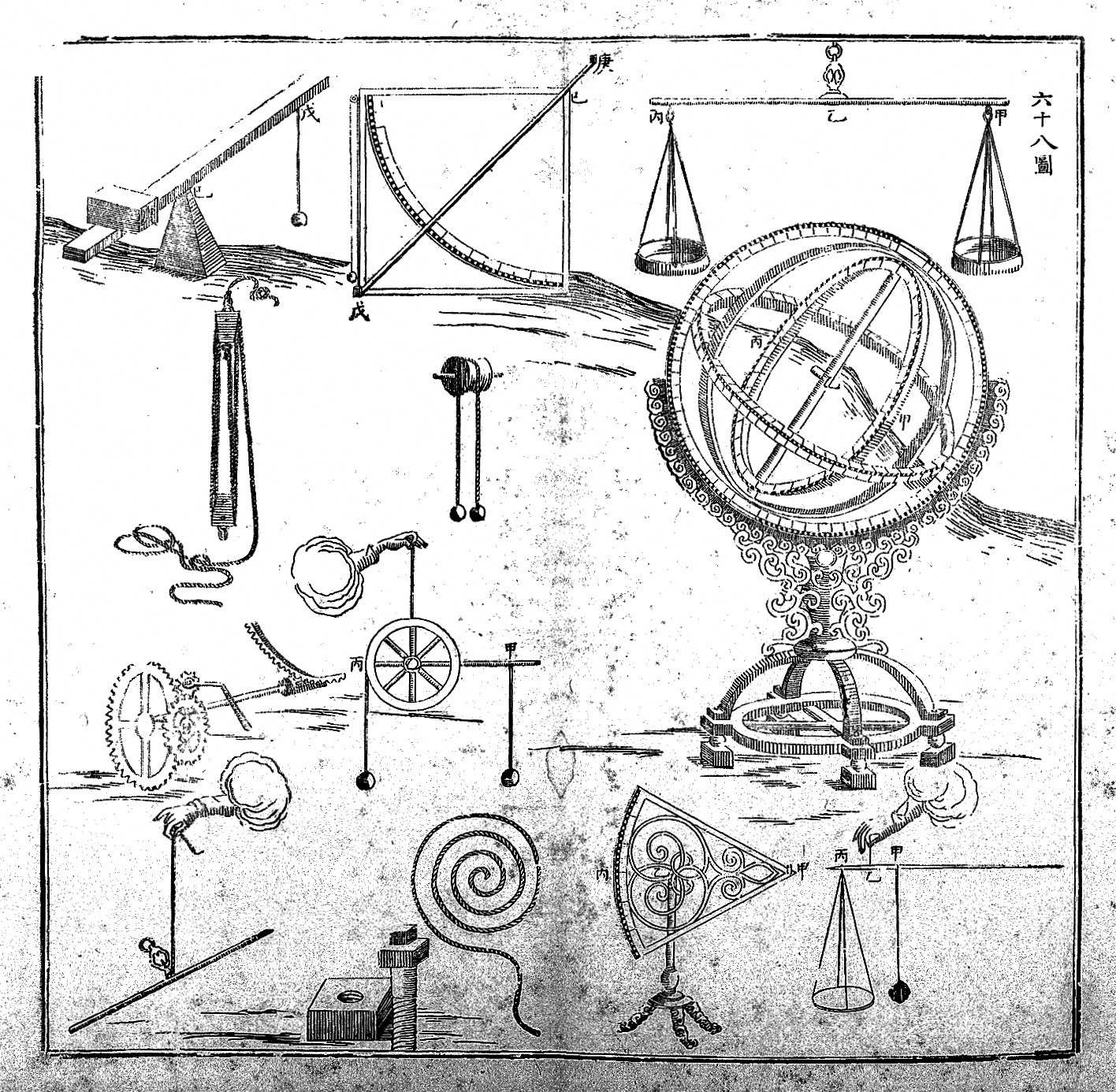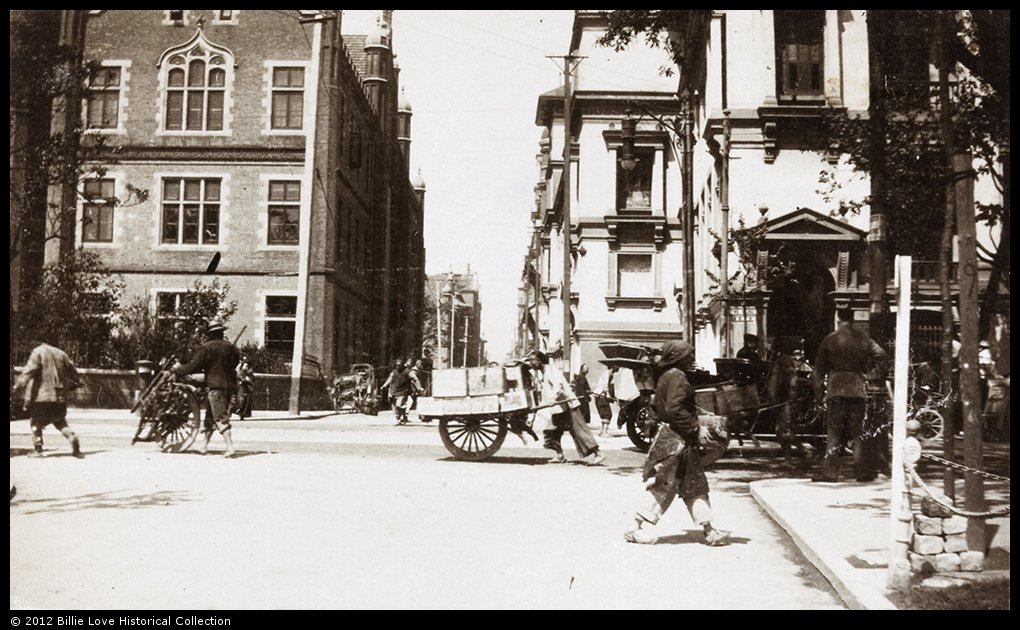- Home
- Publications
- PAGES Magazine
- Archives of Societies and Historical Climatology In East and Southeast Asia
Archives of societies and historical climatology in East and Southeast Asia
Williamson F & Pei Q
Past Global Changes Magazine
28(2)
40-41
2020
Fiona Williamson1 and Qing Pei2
Major sources of social archives for paleoclimatology in East and Southeast Asia include ancient annals and chronicles, instrumental records from government, military or missionary bodies, and private records such as diaries. Records are rich but scattered and of inconsistent quality, often requiring different forms of cross-validation and homogenization from those in the Western world.
The source materials and methods that inform investigative studies of past climates can be broadly distinguished into two groups: historical climatology, which relies on the archives of societies, and paleoclimatology, which draws from the archives of nature (Brönnimann et al. 2018). While many studies often utilize evidence of both types, the archives themselves remain distinct. The archives of society are a "unit of information coded by humans which refers to weather and climate, usually from the viewpoint of individuals" (Pfister 2018). As Pfister notes, these records can be broadly categorized into three areas: instrumental weather observations, narrative accounts of weather, and human observations of climate proxies. Studies of these archives have taken several forms, such as the recovery of observational data, the correlation of extreme weather events or longer-term periods of unusual highs or lows with human activities, and reconstructive analysis based on combinations of documentary and paleoproxy data.
Sources
In East Asia, such sources of historical climate information take various forms. South Korea, for instance, has detailed narrative records of unusual or extreme weather contained in the 1st century BCE manuscripts History of the Three Kingdoms and Memorabilia of the Three Kingdoms and, later, the Annals of the Joseon Dynasty (1392–1897) (Chun et al. 2013). In China, too, a wealth of ancient chronicles and literature also survive, documenting both climatic conditions and natural disasters. The classical Twenty-Four Histories (二十四史), for example, provide a major social archive for Chinese scholars (Zhang 2004). Such archives exist because of emperors' interest in the "Mandate of Heaven" (Pei and Forêt 2018), whereby unusually bad weather or strange phenomenon could be considered the result of a ruler's failures.
 |
|
Figure 1: Illustrations of astronomical instruments, Beijing, China, by the Belgian Jesuit missionary Ferdinand Verbiest (1623–1688). Source: https://wellcomecollection.org/works/ukc9nmta |
Agriculture was critically important to these ancient societies. Thus, provincial and central government records charted severe cold, frost, snow, drought, and flood events that might impact harvests, as well as incidents such as natural disasters, plagues, and famines (Zhang 2004). Due to their proclivity for extreme weather, Japan, China, and Korea were all early developers of rain- and snow-gauge technologies and in observing and keeping records of nature, such as blossoming seasons (Aono and Saito 2010). The Chinese Qing dynasty Yu-Xue-Fen-Cun (雨雪分寸) records of rain and snow (YXFC records) document how deeply rain and snow penetrated the soil (Fig. 1). Phenological records of oriental migratory locust swarms have also been reconstructed as an indicator of climate change (Huang et al. 2019). In the towns and ports of Japan and China, such as Nagasaki, Xiamen, and Beijing, meteorological records were also made by visiting traders, doctors, and missionaries and by military officials stationed at colonial outposts from the early-modern period into the early 19th century (Demarée et al. 2013).
By the late 19th century, abundant records were made across newly formed meteorological networks of registering stations and observatories, for example the China Coast Meteorological Register compiled from observations made by the China Coast Customs Service which had its headquarters in Shanghai (Fig. 2).
These records are available in sources such as government gazettes, official communications, and newspapers. Many of these are now being recovered under the aegis of major data recovery projects (ACRE: Allan et al. 2011; REACHES: Wang et al. 2018). Personal diaries and church records are also being recovered (Mikami 2008).
Southeast Asia is more reliant on the archives of nature than of society for the pre-modern period, but some records exist. Again, these take the form of ancient chronicles that chart periods of severe droughts or floods that disrupted society, such as those available from the 14th century in Burma, Cambodia, and Dai Viet (Buckley et al. 2014). For the rest of Southeast Asia, the colonial period tends to hold the best documentation on past climates, with a wealth of climate data collated by the colonial French, British, Dutch, Spanish, Japanese, and American governments. From early medical topographies that noted aspects of the climate as they related to health, to private diaries and military records, these sources became increasingly sophisticated by the end of the 19th century as meteorological science became more standardized and regulated globally.
 |
|
Figure 2: Custom House and German-Asiatic Bank, Bund, Shanghai, May 1911. Source: https://www.hpcbristol.net/visual/bl02-024 |
Comments
Studies undertaken for East and Southeast Asia have tended to focus on two main areas with the bulk of research undertaken in China and later Japan: first, the correlation of climatic events with changes to human societies, for example through natural disaster or prolonged climatic instability, resulting in famine, death, warfare, or regime changes; and second, the reconstruction of climate dynamics or particular events, such as El Niño or typhoons (Kubota and Chan 2009). Chinese scholars are better known for studies extending over centuries and even millennia, whereas in Japan — although Chinese recording systems had a large influence historically — scholars have had a different focus, exploring more recent climates and explaining past variations from the perspective of explaining teleconnections and climate dynamics.
Of course, there are inherent problems in using these early records. In China, the ancient records usually entailed general patterns of phenomena or events, a recording style that translates as "Generalize Details and Absorb Them". Descriptions were qualitative rather than quantitative, for instance: big (大), medium (中), or small (小). Even the considerably more systematic Qing YXFC records contain inconsistencies, as external influences, such as the abilities of the recorder or administrative differences across regions, all impinge on their accuracy (Pei and Forêt 2018).
Even the supposedly standardized instrumental observations of the later 19th century are not without criticism. In Singapore and Malaysia, even contemporaries critiqued the pre-1920s records, blaming poorly trained staff and a lack of resources.
Cross validation of statistics and data homogenization methods are used to combat these issues (Gao et al. 2018). Current paleoclimate reconstructions based on Chinese records are typically interpreted using a five-point series following the Semantic Differential Method (Zhang 2004). Japanese scholars have used the Standard Normal Homogeneity test, the Buishand Range test, and the Pettitt test (Zaiki et al. 2006). Studies reliant on ancient chronicles may also combine the historical narratives with paleo-proxy data (Buckley et al. 2014).
In spite of inaccuracies, however, reconstructions based on social archives still have the potential to span millennia and allow for amazing insights into past climates. Because studies using archives of societies for this region are significantly different from their European counterparts, the use of such archives are still gaining momentum in research and continuing to enrich the application of social archives in paleoclimatology.
affiliations
1School of Social Sciences, Singapore Management University, Singapore
2Department of Social Sciences, Education University of Hong Kong, Hong Kong
contact
Fiona Clare Williamson: fwilliamson smu.edu.sg
smu.edu.sg
references
Allan R et al. (2011) Bull Amer Meteorol Soc 92: 1421-1425
Aono Y, Saito S (2010) Int J Biometeorol 54: 211-219
Buckley B et al. (2014) Quat Sci Rev 95: 1-19
Chun Y et al. (2013) Meteorological, Astronomical, and Seismological Observations from Ancient Korea. Korean Meteorological Archives Series No. 4, Korea Meteorological Administration, 137 pp
Demarée GR et al. (2013) Bull Séanc Acad R Sci Outre-Mer 59: 385-405
Gao E et al. (2018) Meteorol Serv Singapore Res Lett 2: 3-11
Huang B et al. (2019) Nat Hazards 95: 529-545
Kubota H, Chan JCL (2009) Geophys Res Lett 36: 1-4
Mikami T (2008) Weather 63: 190-193
Pei Q, Forêt P (2018) Environ Hist 23: 863-871
Wang PK et al. (2018) Sci Data 5: 180288
Zaiki M et al. (2006) Int J Climatol 26: 399-423
Zhang DE (2004) A Compendium of Chinese meteorological records of the last 3,000-years. Jiangsu Education Press, 2701-2843
